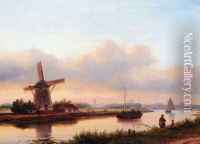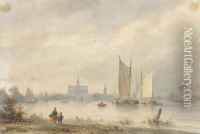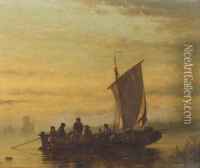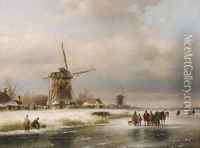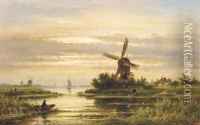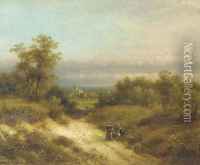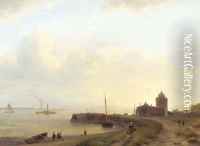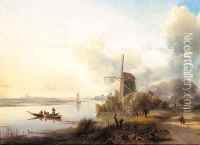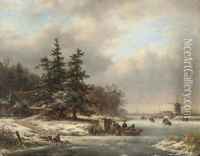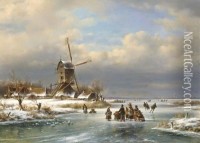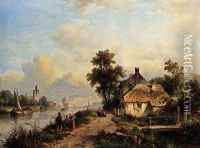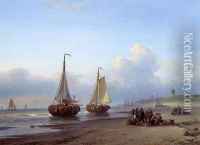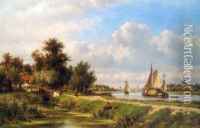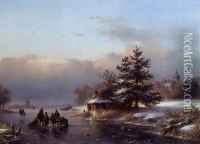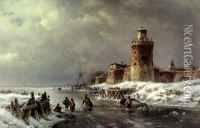Lodewijk Johannes Kleijn Paintings
Lodewijk Johannes Kleijn, born in The Hague, Netherlands in 1817, was a 19th-century Dutch landscape painter. Kleijn's oeuvre primarily consisted of landscapes, which often featured winter scenes and summer vistas that showcased his skill in capturing the delicate interplay of light and shadow. He was particularly adept at depicting the Dutch countryside with its polders, canals, and windmills, elements that are emblematic of the Netherlands' rural scenery.
Kleijn received his artistic training at the Academy of Art in The Hague, where he was influenced by the Dutch Romantic school of painting. This period in Dutch art was characterized by a return to nationalistic themes and an emphasis on the grandeur of the country's landscapes and history. Kleijn's work, however, also displayed a sensitivity to the subtleties of atmosphere and a fidelity to the naturalistic details of the scenes he painted, which linked him to the Hague School, a group of artists who focused on realistic representations of Dutch life and landscapes.
Throughout his career, Kleijn exhibited his works at various important exhibitions and was well-regarded among his peers. His paintings were appreciated for their tranquil beauty and technical proficiency. Despite his talent, Kleijn did not achieve the same level of fame as some of his contemporaries, and as a result, he remains a lesser-known figure outside of Dutch art history circles.
Kleijn continued to paint throughout his life, leaving behind a body of work that captures the essence of the Dutch landscape during the 19th century. He passed away in 1897, leaving a legacy that offers a glimpse into the pastoral beauty of the Netherlands during this period.
